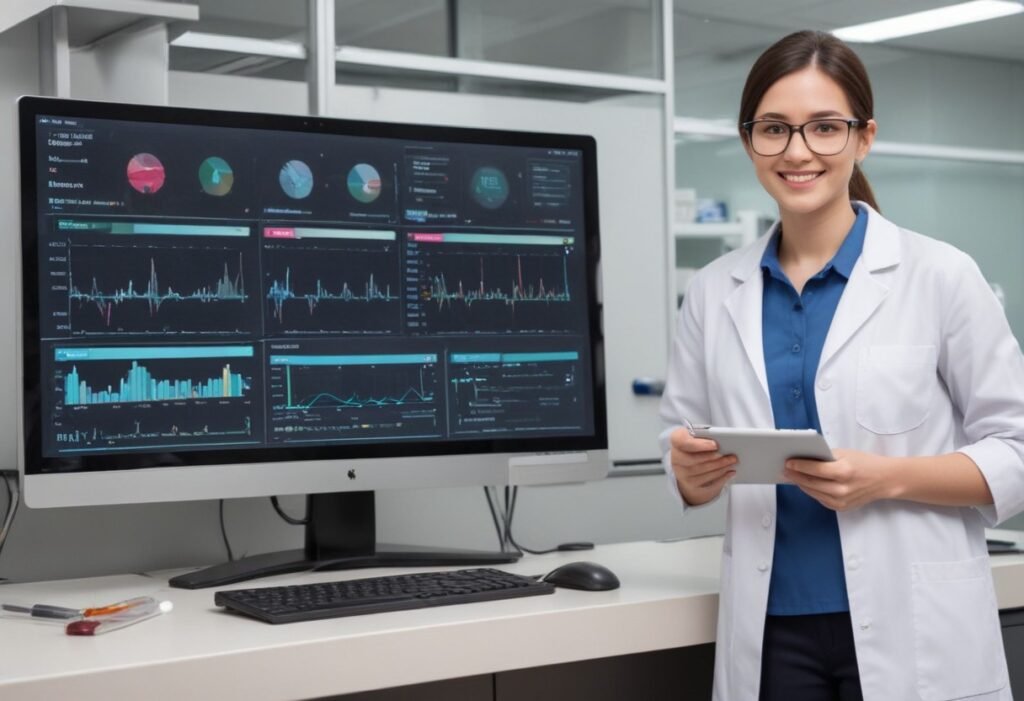
Ensuring the highest standards of quality and compliance is essential in the life sciences sector to guarantee safety and effectiveness of medicinal products. Given the growing intricacy of manufacturing processes and regulatory demands, firms are increasingly turning to advanced statistical software to streamline their quality assurance efforts and facilitate Annual Product Quality Review (APQR) process. These software solutions offer robust analytical capabilities, empowering manufacturers to scrutinize vast datasets, discern trends, and make data-informed decisions to bolster product quality and regulatory adherence.
Role of Statistical Software in Lifesciences
Statistical software plays a pivotal role in quality assurance by furnishing robust tools for data analysis, visualization, and interpretation. These solutions come equipped with sophisticated statistical algorithms and methodologies tailored to the unique needs of the lifesciences industry. Key functionalities of the software for quality assurance encompass:
- Data Analysis: Empowers lifesciences industry to analyze diverse datasets, spanning analytical results, process parameters, and stability data. By employing statistical techniques like hypothesis testing, regression analysis, and multivariate analysis, manufacturers can uncover insights into process performance, product quality, and potential sources of variation.
- Process Monitoring and Control: Through statistical process control (SPC), manufacturers can monitor manufacturing processes in real-time and identify deviations from established control limits. By deploying control charts, run charts, and capability analysis tools, companies can ensure process stability, minimize variability, and uphold product quality.
- Quality Risk Management: Facilitates the implementation of quality risk management (QRM) principles by enabling manufacturers to assess and prioritize risks associated with manufacturing processes and product quality. By conducting risk assessments and utilizing tools like failure mode and effects analysis (FMEA) and fault tree analysis (FTA), companies can proactively identify and mitigate potential risks to patient safety and product quality.
- Design of Experiments (DoE): Offers comprehensive capabilities for designing, executing, and analyzing experiments to optimize manufacturing processes and formulations. By employing DoE techniques such as factorial designs, response surface methodologies, and mixture designs, companies can systematically explore process parameters and formulation variables to achieve desired product quality attributes.
Utilizing Statistical Software for APQR Analysis
The APQR process is pivotal in lifesciences quality management as it provides systematic review of product quality data and manufacturing processes. Statistical software enhances the APQR process by enabling manufacturers to efficiently analyze large volumes of data, identify trends, and assess the effectiveness of process controls. Key aspects of utilizing the software for APQR analysis include:
- Data Integration and Visualization: Facilitates the integration of diverse data sources, including analytical results, stability data, complaints, and deviations, into a centralized platform. By visualizing data using dashboards, charts, and graphs, manufacturers can gain insights into product quality trends, identify outliers, and prioritize areas for further investigation.
- Trend Analysis: Enables trend analysis by applying statistical techniques such as time series analysis, regression analysis, and control charting to historical data. By identifying patterns and trends in product quality over time, companies can evaluate the stability of manufacturing processes, detect potential issues, and implement preventive measures to uphold ongoing product quality.
- Root Cause Analysis: In the event of deviations or quality issues, the software enables manufacturers to conduct root cause analysis to identify the underlying factors contributing to the problem. By employing statistical methods like Pareto analysis, fishbone diagrams, and correlation analysis, companies can pinpoint the root causes of deviations and implement corrective actions to prevent recurrence.
- Documentation and Reporting: Streamlines documentation and reporting of APQR findings, conclusions, and recommendations in compliance with regulatory requirements. By generating comprehensive reports and documentation templates, companies can demonstrate adherence to regulatory guidelines and ensure transparency in the APQR process.
Conclusion
Leveraging statistical software in quality assurance and APQR analysis represents a strategic investment for the lifescience industry aiming to enhance product quality, compliance, and efficiency. By harnessing its analytical prowess, manufacturers can gain deeper insights into manufacturing processes, identify improvement opportunities, and propel continuous quality improvement initiatives forward. As the lifescience sector evolves, statistical software will increasingly play an integral role in safeguarding the safety, efficacy, and quality of medicinal products worldwide.



























